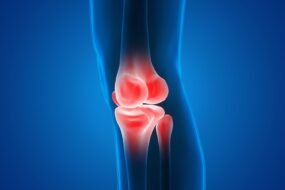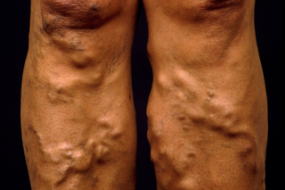
Epistaxis, or nosebleed, is defined as acute hemorrhage from the nostril, nasal cavity, or nasopharynx. It is one of the most common otolaryngological emergencies, with a bimodal distribution in incidence, peaking in children under 10 years and adults over 50 years. Understanding its pathophysiology, etiology, diagnostic approach, and management is essential for comprehensive care.
Anatomy and Pathophysiology
The nasal cavity has a rich vascular supply derived from both the internal and external carotid arteries, making it prone to bleeding. Key anatomical considerations include:
- Anterior Bleeding (Kiesselbach’s Plexus):
- Located in the anterior nasal septum, also known as Little’s area, where the anterior ethmoidal, sphenopalatine, greater palatine, and superior labial arteries converge.
- The mucosa in this area is thin, making it vulnerable to trauma and drying, which predisposes to anterior epistaxis.
- Posterior Bleeding (Woodruff’s Plexus):
- Originates from branches of the sphenopalatine artery, a terminal branch of the maxillary artery.
- These bleeds are often more severe due to higher pressure and larger vessels involved.
- Posterior epistaxis is common in older adults and is associated with systemic conditions such as hypertension.
Etiology
The causes of epistaxis can be broadly classified into local, systemic, environmental, and iatrogenic factors:
- Local Causes:
- Trauma: Nasal trauma from digital manipulation (nose picking), blunt injuries, or foreign bodies. Nasal fractures often involve significant bleeding.
- Inflammatory Conditions: Chronic rhinitis, sinusitis, and granulomatous diseases (e.g., Wegener’s granulomatosis) can erode the nasal mucosa.
- Neoplastic Causes: Benign (e.g., nasal polyps) and malignant tumors (e.g., squamous cell carcinoma, angiofibroma) can cause recurrent epistaxis. Angiofibromas, typically found in adolescent males, are highly vascular and can lead to life-threatening hemorrhage.
- Septal Abnormalities: Septal deviation, perforation, or spurs may exacerbate dryness and mucosal injury.
- Chemical Exposure: Irritants such as smoke or industrial chemicals can damage nasal mucosa.
- Systemic Causes:
- Hematological Disorders: Coagulopathies (e.g., hemophilia, von Willebrand disease), thrombocytopenia, and anticoagulant use can impair clot formation.
- Cardiovascular Disease: Hypertension does not cause epistaxis directly but is associated with more severe bleeding and difficulty controlling the hemorrhage.
- Hereditary Hemorrhagic Telangiectasia (HHT): Also known as Osler-Weber-Rendu syndrome, a genetic condition causing abnormal blood vessel formation, frequently manifests as recurrent nosebleeds.
- Chronic Liver Disease: Impaired synthesis of clotting factors and thrombocytopenia from splenomegaly contribute to bleeding risk.
- Environmental and Lifestyle Factors:
- Dry Air: Common in winter, leading to mucosal drying and cracking.
- Substance Use: Alcohol dilates blood vessels, while cocaine use can cause severe mucosal damage and septal perforation.
- Iatrogenic Causes:
- Medications: Anticoagulants (warfarin, heparin), antiplatelet agents (aspirin, clopidogrel), and nasal corticosteroids.
- Nasal or Sinus Surgery: Postoperative epistaxis can result from surgical manipulation or post-surgical crusting.
Diagnostic Approach
A systematic approach to diagnosing epistaxis involves:
- History Taking:
- Characterize the bleeding: frequency, duration, amount, and side (unilateral vs. bilateral).
- Explore potential triggers: trauma, recent nasal surgery, medication use.
- Investigate systemic symptoms: easy bruising, family history of bleeding disorders, or signs of underlying systemic disease (e.g., weight loss, night sweats for malignancies).
- Physical Examination:
- Inspection: Use a nasal speculum and headlamp for visualization. Identify the bleeding site and assess for any septal deformities, masses, or foreign bodies.
- Oropharyngeal Examination: Inspect for posterior bleeding by examining the throat for blood pooling or clots.
- Vital Signs: Assess hemodynamic stability; signs of hypovolemia may indicate significant blood loss.
- Laboratory Investigations:
- Complete Blood Count (CBC): Evaluate for anemia or thrombocytopenia.
- Coagulation Studies: Prothrombin time (PT), activated partial thromboplastin time (aPTT), and international normalized ratio (INR) to assess for coagulopathies.
- Liver Function Tests: Abnormal results may suggest liver disease contributing to coagulopathy.
- Imaging (if indicated):
- CT Scan: Useful for suspected nasal fractures, tumors, or sinus disease.
- Endoscopy: Nasal endoscopy may be indicated for posterior or recurrent bleeds to better visualize the bleeding source.
Management
Management of epistaxis involves both acute intervention to stop the bleeding and measures to prevent recurrence.
- Initial Stabilization:
- Airway Management: Maintain patency, especially in severe bleeds.
- Positioning: Sit the patient upright and lean forward to minimize blood aspiration and facilitate drainage.
- Local Measures:
- Direct Pressure: Compress the soft part of the nostrils for 10-15 minutes.
- Topical Vasoconstrictors: Application of oxymetazoline or phenylephrine can constrict nasal blood vessels and reduce bleeding.
- Chemical Cautery: Silver nitrate sticks can cauterize the bleeding site if localized.
- Anterior Nasal Packing: Gauze or nasal tampons coated with antibiotic ointment to reduce the risk of infection.
- Posterior Epistaxis Management:
- Posterior Nasal Packing: Balloon catheters (e.g., Foley, Rapid Rhino) can compress posterior vessels.
- Endovascular Embolization: For refractory cases, interventional radiology may embolize the sphenopalatine artery.
- Surgical Ligation: Ligation of the sphenopalatine, anterior ethmoidal, or external carotid artery may be required in severe cases.
- Adjunctive Therapies:
- Correct Coagulopathy: Administer vitamin K, fresh frozen plasma, or platelets as needed.
- Antibiotic Prophylaxis: For patients with nasal packing, especially posterior packs, to reduce the risk of sinusitis or toxic shock syndrome.
Complications
Potential complications of epistaxis include:
- Aspiration: Blood may enter the respiratory tract, causing airway obstruction or aspiration pneumonia.
- Septal Hematoma or Abscess: Untreated septal hematomas can lead to necrosis of the nasal cartilage.
- Rebleeding: Particularly common in posterior epistaxis.
- Infection: Sinusitis or toxic shock syndrome from prolonged nasal packing.
Prevention
Preventative strategies for recurrent epistaxis include:
- Humidification: Use humidifiers in dry environments to keep nasal mucosa moist.
- Nasal Saline Sprays: Regular saline irrigation to maintain mucosal hydration.
- Avoiding Nasal Trauma: Avoid nose picking or aggressive nose blowing.
- Managing Comorbidities: Optimal control of blood pressure and review of anticoagulant therapy.
Prognosis
While the majority of anterior epistaxis cases are self-limited, posterior epistaxis can be challenging to control and may require specialist intervention. Identifying and managing the underlying cause is crucial for reducing recurrence and improving patient outcomes.
Epistaxis management requires a structured approach to local hemostasis, correction of systemic factors, and targeted therapy for underlying etiologies.












